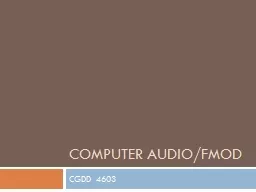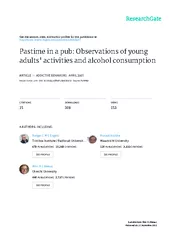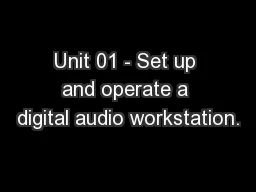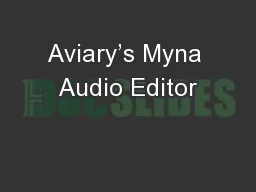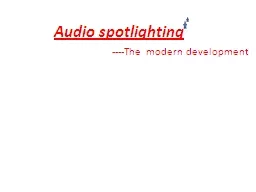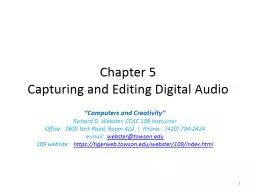PPT-Computer Audio/ fmod CGDD 4603
Author : kittie-lecroy | Published Date : 2018-10-28
Why fmod Sound you might have in a game Background music Sound effects Dialog How do you currently use these in your games fmod is very popular Powerful both
Presentation Embed Code
Download Presentation
Download Presentation The PPT/PDF document "Computer Audio/ fmod CGDD 4603" is the property of its rightful owner. Permission is granted to download and print the materials on this website for personal, non-commercial use only, and to display it on your personal computer provided you do not modify the materials and that you retain all copyright notices contained in the materials. By downloading content from our website, you accept the terms of this agreement.
Computer Audio/ fmod CGDD 4603: Transcript
Download Rules Of Document
"Computer Audio/ fmod CGDD 4603"The content belongs to its owner. You may download and print it for personal use, without modification, and keep all copyright notices. By downloading, you agree to these terms.
Related Documents

